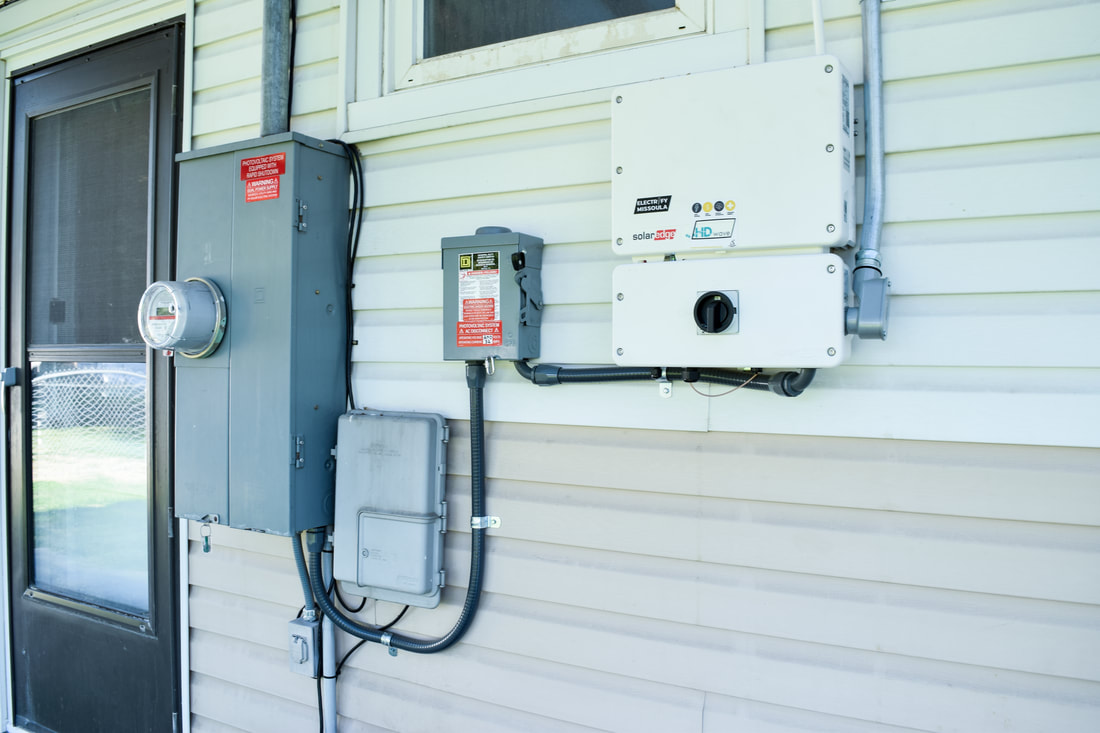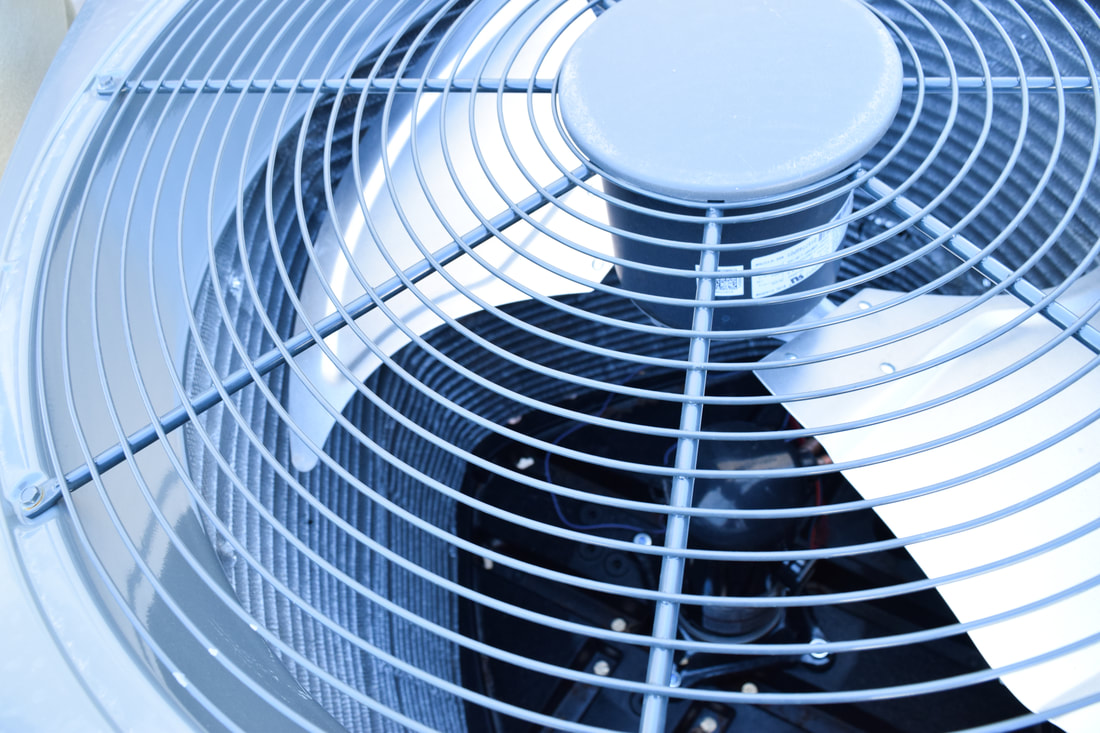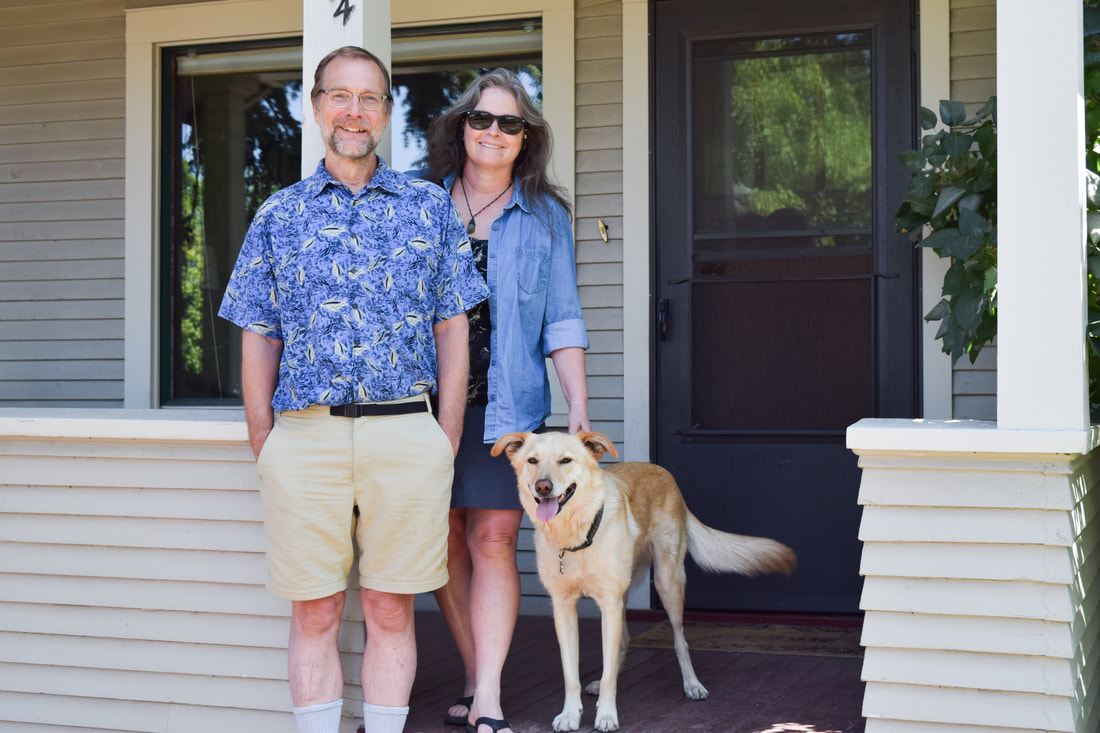|
Written by Evora Glenn, City of Missoula Type of Project: Retrofit Type of building: Single family home Systems electrified:
When Nick and Caitlin bought their house in early 2020 they already knew that solar and electrification were upgrades they’d want to explore. Nick had been interested in solar since he was a kid, he even won an award in his high school science fair by exploring how to optimize the photovoltaic effect – the process that our modern solar panels use to generate electricity. Caitlin also had an early introduction to renewable energy in Iowa where she grew up witnessing the utility-scale transition to wind energy. The opportunity to install solar at their own home felt like an empowering way to join the transition to clean electricity. Knowing their new home was heated by an old diesel furnace also spurred their plans to upgrade to a highly efficient air source heat pump when the diesel system would inevitably need to be replaced.
While going without was doable, it was also a wakeup call. They wanted to make the switch to solar and electric heat as soon as they could. By February of 2023, the furnace had reached the end of its operational life, spurring the urgent necessity for replacement. Moving forward with both upgrades at the same time was not only going to remove them from alarmingly volatile fuel prices, it was also going to save them money long-term. Nick ran the numbers on initial cost and energy savings over time. That clarity on the full economic picture was what finally empowered Nick and Caitlin to take the leap. They could see that they’d be better off economically by making the switch. Installing solar was particularly important in this calculus. If they had decided to only switch to the electric air source heat pump they would be saving a ton compared to their old diesel system, but they also knew that the price of electricity compared to the price of natural gas would have made a natural gas furnace the cheaper option up front, and to operate. That changed with solar. By installing solar at home, they could generate the additional electricity they’d need to power their electric heat pump, saving big on electricity costs. This reduction in cost made the switch to electric heating the best option cost-wise. After 10 years, they’ll have paid off the initial cost of their upgrades and will be paying next to nothing to heat and cool their home for at least the next two decades. Those are significant savings. While doing the upgrades together made the most sense financially, it introduced some technical complexity. They needed to work with a solar installer to quote them for a solar array that would meet their future electricity demand after they’d installed their electric heating, not their current electricity demand. Not all installers were interested in looking ahead and making estimates, but they were able to get traction with Solar Plexus who explored their options for solar development and let Caitlin and Nick know how much solar their home was suitable for and how much their future electricity need might be. That information was enough for Nick and Caitlin to make an informed decision on their solar array size. Beyond the technical considerations, Nick and Caitlin were also looking at financial resources to make these two upgrades at once and were supported by the Department of Environmental Quality’s Alternative Energy Revolving Loan Program as well as the new tax credits passed in the Inflation Reduction Act. The DEQ loan would cover the up-front cost of the solar and the heat pump, and the tax credits took 30% off the cost of both technologies.
This same tax credit also applies to highly efficient heat pump water heaters, which is next on Nick and Caitlin’s agenda. They hope to combine the 30% tax credit with a local Missoula City-County rebate that takes an additional $575 off the cost. With this next upgrade, Nick and Caitlin will be well on their way to an all-electric home powered by renewable energy. For them, joining the transition to electrification and renewable energy is also about the health and safety benefits. They’ve had more than one close friend or family member have a scare with their natural gas systems. In each case, a mechanical malfunction created high levels of carbon monoxide in their homes, a severely dangerous situation. They were lucky their alarms functioned properly and that they evacuated instead of going to investigate. Both Nick and Caitlin are looking forward to when they can rest assured that such risks will no longer be a concern in their home. Of all the different factors that encouraged them to make these changes, and all their motivations for doing so, Nick and Caitlin have one big piece of advice for other family’s looking to do the same: run the numbers. When they could see the whole economic picture, it made the choice a no-brainer.
0 Comments
Written by Homeowners Ted Catton & Diane Krahe When our methane gas (aka natural gas) furnace gave up the ghost in March 2021, we knew it was time to transition our house to electric heat. We live in a small Craftsman-style house in the slant streets. Previous to the furnace going out, we had improved our house’s insulation, replaced old windows, and, in 2018, we installed nine solar panels on the southwest-facing roof. But the solar power that is generated from our rooftop solar array is only enough to cover our electrical appliances, lights, and plug-ins. We knew that home heating is the big one for home energy use, and wondered what our electrical home heating options were and how many more solar panels we would need to power the system. Little did we imagine that we would talk to about a dozen different installers before finding the right one, or that we would need to do so much research for ourselves, or that we would go through the next winter without a major heat source in the house! That last point is our bottom line. Skeptics told us that we did not have enough rooftop for all the solar panels that would be needed to heat our house by electricity. But after one full winter of running the system with electricity purchased from Northwest Energy, we now know how much juice it takes. Another row of solar panels will take care of it. The first thing we learned in this process was that just about every industry rep you talk to wants to sell you a new natural gas furnace. Any installer will discuss clean-energy alternatives with you, but they will advocate for what is most economical, or what is most comfortable, not what is sustainable. So you learn a lot from them but you also have to do a lot of your own research and figuring (and advocating). The next thing we learned is that the heat pump technology comes in many varieties so you have to learn the ins and outs of ductless systems, inverter technology, air handlers, mini-splits, BTUs, kilowatt hours, and more.
We have a natural gas insert in our fireplace in the living room. We are keeping this for its aesthetics and as an emergency backup heat source. (We made it through the winter of 2021-22, the winter we were transitioning between systems, by closing off half our house and relying on this source to keep the living room and kitchen comfortably warm. For December and January, we moved all the house plants into the living room and rented another place to live.) Besides the insert, we still have a natural gas water heater. When it wears out, we will replace it with an electric one. We are learning to live with thermostats set at the same temperature all around the clock and with warm air coming out of the heat vents at about 100º F rather than 130º F. Instead of a growly furnace in the basement, now we occasionally hear a whoosh from the Freon gas shooting through the lines when it is very cold outside and the outdoor unit enters the defrost cycle. We were concerned about how much outdoor noise pollution the outdoor unit would make. It is quite minimal. We feel that changing our home heating system from natural gas to electric was something we simply had to do and we are pleased with the results.
|
Electrify Missoula is a collaboration between Missoula County, Climate Smart Missoula and the City of Missoula.
This website is intended for informational purposes only. Be sure to consult a professional before making your plan for electrification.
This website is created and updated by Climate Smart Missoula.
Learn more about all of our local climate efforts at
missoulaclimate.org
Learn more about all of our local climate efforts at
missoulaclimate.org
Proudly powered by Weebly















 RSS Feed
RSS Feed


